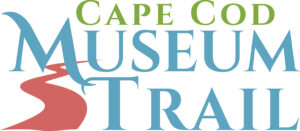When Orleans was at the center of international communications
French Cable Station Museum
In 1879 France laid cable stretching 2,242 nautical miles across the Atlantic from Deolen to St. Pierre in Canada and an additional 827 nautical miles from there to Cape Cod, landing at a custom-built station near the Nauset Light Beach lighthouse at North Eastham, which was used for the next twelve years.
The North Eastham station was somewhat isolated and difficult to access in the winter. Sin 1891 a new station was built at Orleans, near the town’s commercial district.
A cable from the old station at Nauset was laid across Nauset Marsh to the foot of Town Cove at Orleans and then to the new cable station house.
Maintaining the large, old station merely as a connection point proved too costly, and, as a result, the Nauset station house was sold in 1893.
At the same time, a small hut that measured about ten by fifteen feet was constructed near the old station as a connecting point for the cable. That hut currently forms part of the structure known as the French Cable Hut. The 1879 cable remained in operation until the 1930s.
Meanwhile, in 1898 the first direct cable from France was laid by the François Arago from Brest to the Orleans station. At 3,173 nautical miles it was the longest single-span cable laid up to that time.
The Orleans station operated until it was dismantled by the US Signal Corps during World War II. It was put back into operation in 1952, and finally closed in November 1959. Fortunately the building and its equipment were preserved, and the station opened as a museum in 1972.
When you visit the station today, you will encounter an historic collection of original Atlantic undersea telegraphic cables, instruments, maps, and assorted memorabilia.
The station is part of American History. During World War I, General Pershing in France communicated with the US Government through this cable station.
In 1927 the message that Charles Lindbergh had landed in Paris came through this station from Paris. It was then sent to the rest of the United States.
Among the exhibits:
Superintendent office
This office is essentially as it was through the years. Look around and you will see the walls are covered with a few photos and news articles of major events in the history of the station. Some of these were given to the museum by the Smithsonian Institute. By the superintendents desk is an early copy machine (non photographic). Every letter written was copied before being sent.
Testing room
This room contains equipment that was used to determine the location of a fault or break in the cable. Some of the equipment is still operational and can be demonstrated. Also in this room is one of the most unique instruments in the world. It is the Heurtley Magnifier used to amplify the weak signal coming from France. It was developed before there were vacuum tubes. There are only three in existence in the world today.
Repair room
This is the room that held the equipment used to repair the cable and equipment. In this room are found samples of the early submarine telegraph cable and cables that have been under the sea for decades. On the walls are photos of a repair operation at sea. In a sealed glass cabinet in the hall are many interesting items including an original Tiffany and Co. Wooden box containing a sample of the 1858 cable. Cyrus Field had sold the cable to Tiffany immediately after the success of the first transatlantic cable in 1858.
Operations room
This was the heart of the cable station. This was where the messages from France were received, recorded, and retransmitted to rest of the country. Most of the equipment still functions and can be demonstrated.
In this room is a portion of the “Artificial Cable” or “Balancer” which enabled duplex (Two directions at once over a single cable) operation of the cable in an extremely clever manner.
The museum is free to all visitors. Donations are welcome to help defray the cost of running the museum. It’s located at 41 South Orleans Road. For more information, please click here. For more information, please click here.
Hours of operation
JULY & AUGUST:
Thursday through Sunday 1 PM to 4 PM
JUNE & SEPTEMBER:
Friday, Saturday, and Sunday 1 PM to 4 PM

Leave A Comment